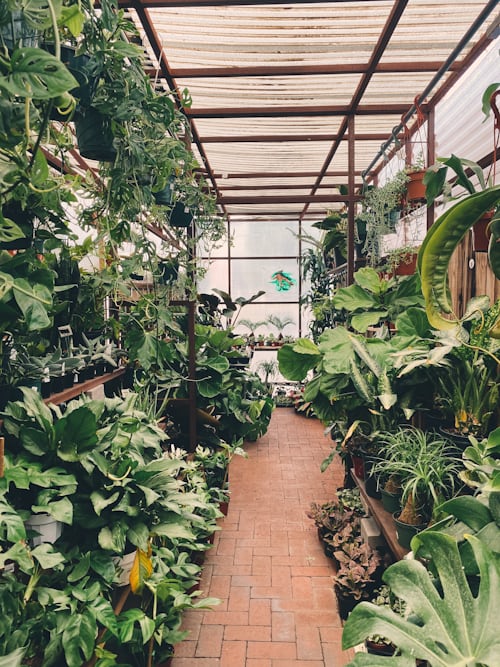Moving Plants to a New Home: What You Need to Know for a Stress-Free Relocation

Sorting and packing through an entire life’s worth of possessions is stressful. For some, perhaps, the move could be gut-wrenching, especially if it’s an unhappy one.
Regardless of whether the move is happy or unhappy, the tenets of moving out are clear: wrap fragile items in biodegradable packing paper or bubble wrap and put the rest in boxes. But what about your plants? Have you thought of their well-being?
Moving plants is a different story altogether. Plants are delicate living organisms, and changes in light, lack of humidity, and excessive bouncing around in the truck can take a toll on their health.
Earlier research by the National Institute of Health study reports that exposure to moderate temperature increases can result in cell death or injury in plants. Somewhat surprisingly, the aftermath of temperature change is only observed after a longer period of time.
Homeowners are often anxious about moving plants because of the climatic conditions. Perhaps for these reasons, many houseplants are either gifted to friends or end up on Craigslist.
Leaving your best roommates, nevertheless, is heartbreaking, especially those succulents you propagated with care. With a bit of care and forethought, though, you can safely transport all your houseplants from one place to another.
Here’s a short guide we’ve curated to walk you through things that will simplify the process of moving plants to a new home:
Factor in Time and Temperature
Never relocate plants in the height of summer when the sun’s rays are intense, the air is dry, and temperatures are soaring. Exposed roots are particularly prone to heat stress in warmer months.
While it’s possible to relocate plants to your new home during summer, you’ll have to take extra precautions. You must water your plants properly before transporting them and make sure they aren’t left under the bare sun.
Likewise, frigid temperatures are fatal for plants. On a freezing day, leaving your plants out for a few minutes can freeze the leaves. When moving out, plants should always be the last thing to be kept in the vehicle. Otherwise, they’ll get damaged.
Hire a Plant Mover a Few Weeks Before Moving Out
Due to their messy, delicate, and perishable nature, only a handful of moving companies agree to relocate plants to a new home. That’s perhaps why many plant parents struggle to find movers.
It’s always a good idea to research movers a few weeks or months before moving out. That way, your likelihood of finding the best moving companies at reasonable rates is higher. If you book a moving company at the eleventh hour, be prepared to pay more than you’d otherwise.
Unpakt suggests that you trim off dead leaves and branches from plants a few weeks before the move. Also, repot all your plants in plastic containers before handing them to the movers. This will prevent them from tipping over during the journey.
Wrap Large and Delicate Plants
Wrapping large and delicate plants with biodegradable packing peanuts or scrunched-up newspapers will keep them safe from damage.
Large plants like fiddle leaf fig trees won’t fit in boxes. Wrap them in horticulture fleece before loading them in your car or handing them to movers. While horticulture fleece is designed for use in winter, it provides excellent padding to the plants without weighing them down.
Label the Boxes
Whether you use containers or boxes, labeling them is necessary. Label boxes with delicate plants as “Fragile” so that movers will handle them with care. For small distances, you can tape the box shut. However, cut out a few holes in the boxes so that the plants can breathe properly. Also, if you tape the box, don’t forget to write “This side up” to ensure proper handling.
Find a Snug Spot for Delicate and Soft Plants
Delicate plants like ferns and succulents get damaged more easily than large plants. Load them in a snug spot so that they remain safe in transit.
You can place a small planter in your car’s cup holder, as it won’t wiggle much. Hence, the possibility of damage is less. However, if you’ve hired a moving company to transport your plants to a new place, store small plants in snug boxes.
A few plants, like Burro’s tail, aren’t worth relocating, as they are sensitive to movement. When planning to relocate plants, it’s best to use your judgment.
A Final Word
It’s normal for plants to be stressed after they are moved to a new location. However, preparing them a few weeks before moving out, packing them securely, and transporting them properly is the key to a successful move.
As soon as they reach your new home, unpack them, allow them to settle in, and feed them after a couple of weeks to avoid stressing them.



:max_bytes(150000):strip_icc()/perennial-flower-garden-layout-5219484-hero-98d6bf293bf84f2e9aff39481210681c.jpg?resize=800%2C450&ssl=1)


